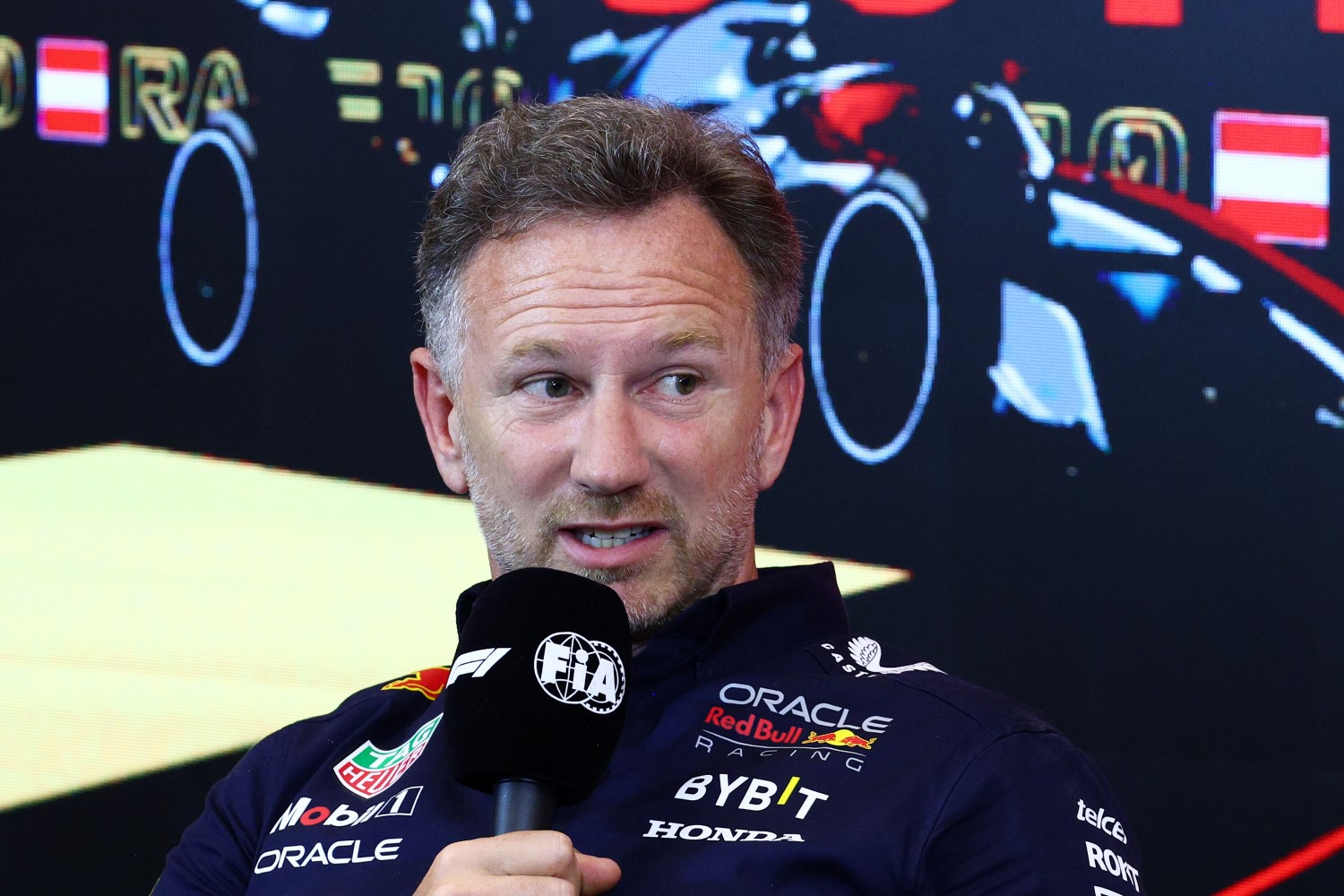F1 News: 2026 engines and cars will destroy parity, double cost (5th Update)
As we wrote last year, the FIA is bending over backward to make their 2026 cars environmentally friendly, when in fact they burn so much fossil fuel flying the series all over the world it’s laughable.
–by Mark Cipolloni–
Below, we talked about how the 2026 rules will make the racing worse, not better.
When you read the latest report in Autosport about all the band-aids the designers have to do to appease the tree-huggers, you realize what can go wrong and how very strung out the entire F1 field can be in 2026.
This is just one of many challenges the engineers are facing to make the 2026 cars smaller yet more environmentally friendly. The problem is – the cars have to generate 50% of their power from the electric motor and battery and that means a heavier battery – which is bad for the handling of the car.
There is a good chance one team will get the new rules right, like Mercedes did at the advent of the hybrid era, and be way ahead of the competition.
In the end, the 2026 cars may destroy Formula 1 competition. One thing is certain – the new cars will likely double in cost because they will be so technically complicated.
And with the cost cap, that is a REAL problem.
January 8, 2024
–By Mark Cipolloni–
In the media bullpen today at the Formula 1 British GP, Max Verstappen was again asked about his negative comments on the 2026 F1 technical regulations.
And he doubled down.
“Todays cars are, of course, incredibly fast,” he said. “I still enjoyed the 2020 and 2021 cars. They were a bit more agile and more fun, but also they were very heavy.
“I would definitely get rid of the hybrid. I think all the time, when I jump back in a V8, I am always so surprised at how smooth the engine is. The top speed is slow compared to what we have now, but it’s just the pickup of the engine and the torque.
“It’s so smooth the whole delivery process: the downshift, and the upshifts. It’s so much more natural than what we have.”
“Of course, the safety standards, they have to go up and they have to improve. That is [one reason] why the cars are getting heavier and heavier, to basically make the chassis stronger, all these kinds of things. So that naturally has a blame, but the hybrid system adds a lot of weight too
“We can’t go back to 500 kilos, 550 kilos, but I think where we are at the moment is way too heavy. We need to look into that.”
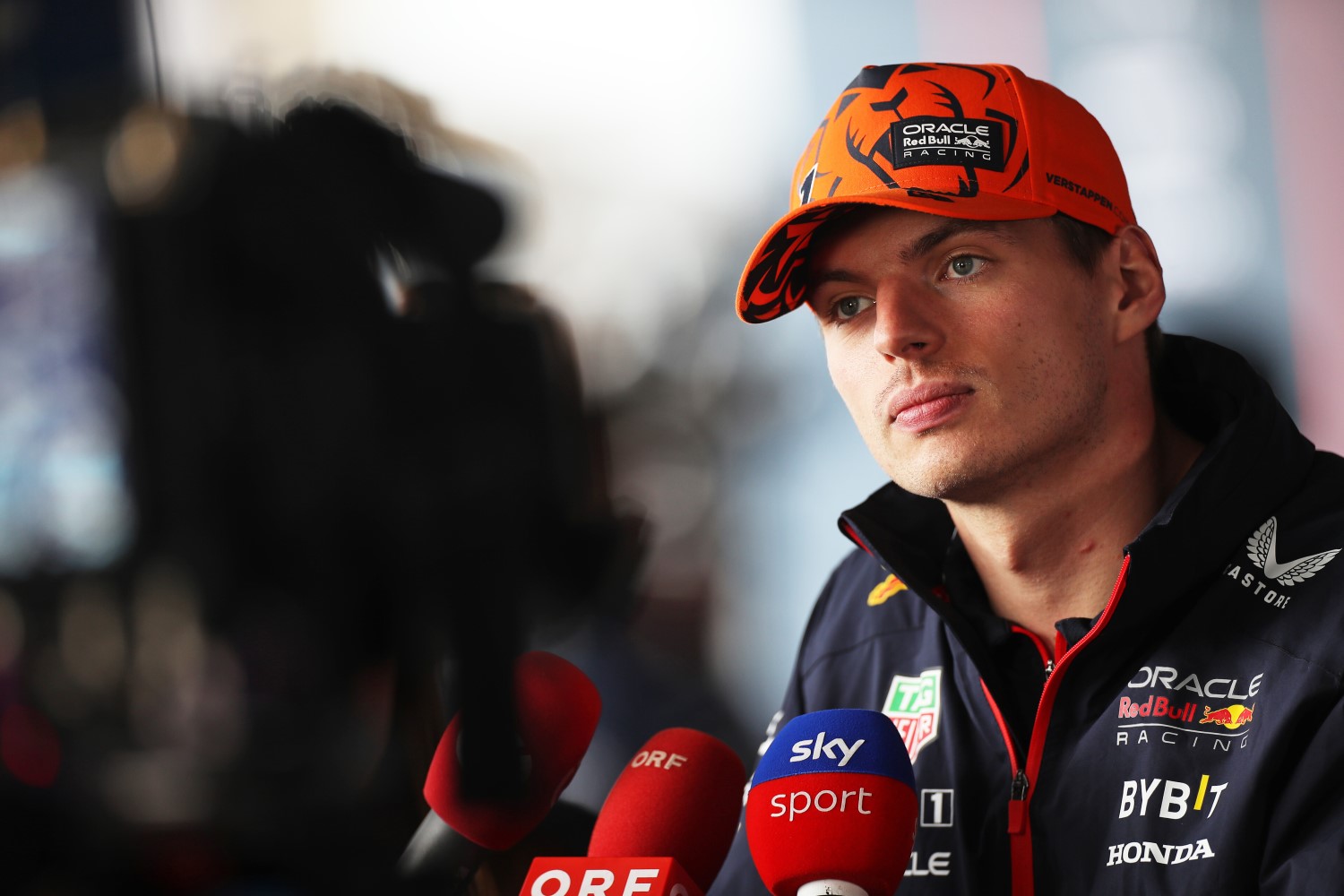
And the weight is going up because the 2026 car will have a much larger battery and additional battery cooling.
“Also, I think the tires, these big tires, you don’t really see a lot when you go into corners in terms of hitting an apex. So, I prefer the smaller tires. It was a lot more fun.”
The bigger tires with 18 inch wheels weight a lot more than the 13 inch wheels and tires did.
Verstappen also believes that rather than F1 heading towards cars that have reduced drag on the straights, that grand prix racing should be adding more drag.
“There are quite a few things I would change,” he added. “I would make the cars also a lot more draggy, so you don’t have to rely so much on the DRS.
“Again, with these new cars in 26, they look like they have a lot less drag. So, it will be even harder to pass as well.”
“It is just not right I think that you have to drive the car like that,” he said. “And also, the way under braking, you just almost literally stay flat out [once the battery drains on a long straight]. I think it will just create a very weird atmosphere.
“It’s a bit like with the blown diffusers, just being flat out almost. For me, it just looks very weird. And also, with the active aero, that is regulating itself. It looks a bit odd to me because the car is controlling the driver.
“I think it’s really overcomplicating a lot of things and, from the engine side, we really need to look at it.”
And think about the cost of doing all this, just to placate the tree-huggers. More electrification, active aero, harder to pass, heavier cars, significantly increased cost…..the list goes on.
Max Verstappen did not say it, but we will:
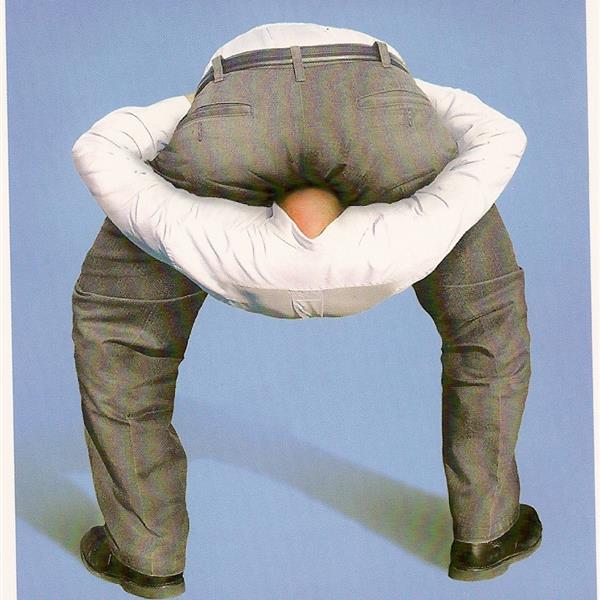
July 2, 2023
–by Mark Cipolloni–
In Sunday’s Austrian GP post-race Press Conference, race winner Max Verstappen was asked his opinion on the proposed 2026 F1 engine rules that make no sense whatsoever and are only being done to appease the tree-huggers who kiss up to politicians to get government handouts.
The 2026 proposal is for the internal combustion engine to make 55% (about 550 HP) of the total power and the electric motor 45% (about 450 HP). Only problem is, the tree-hugger battery will run out of power before the end of some long straights.
He said conversations with the team, the data and Red Bull’s simulations indicate that it looks “pretty terrible” and that at Monza, one of F1’s most power-sensitive tracks, downshifting while at full speed “400-500 meters before the end of the straight” is required because it’s “faster”.
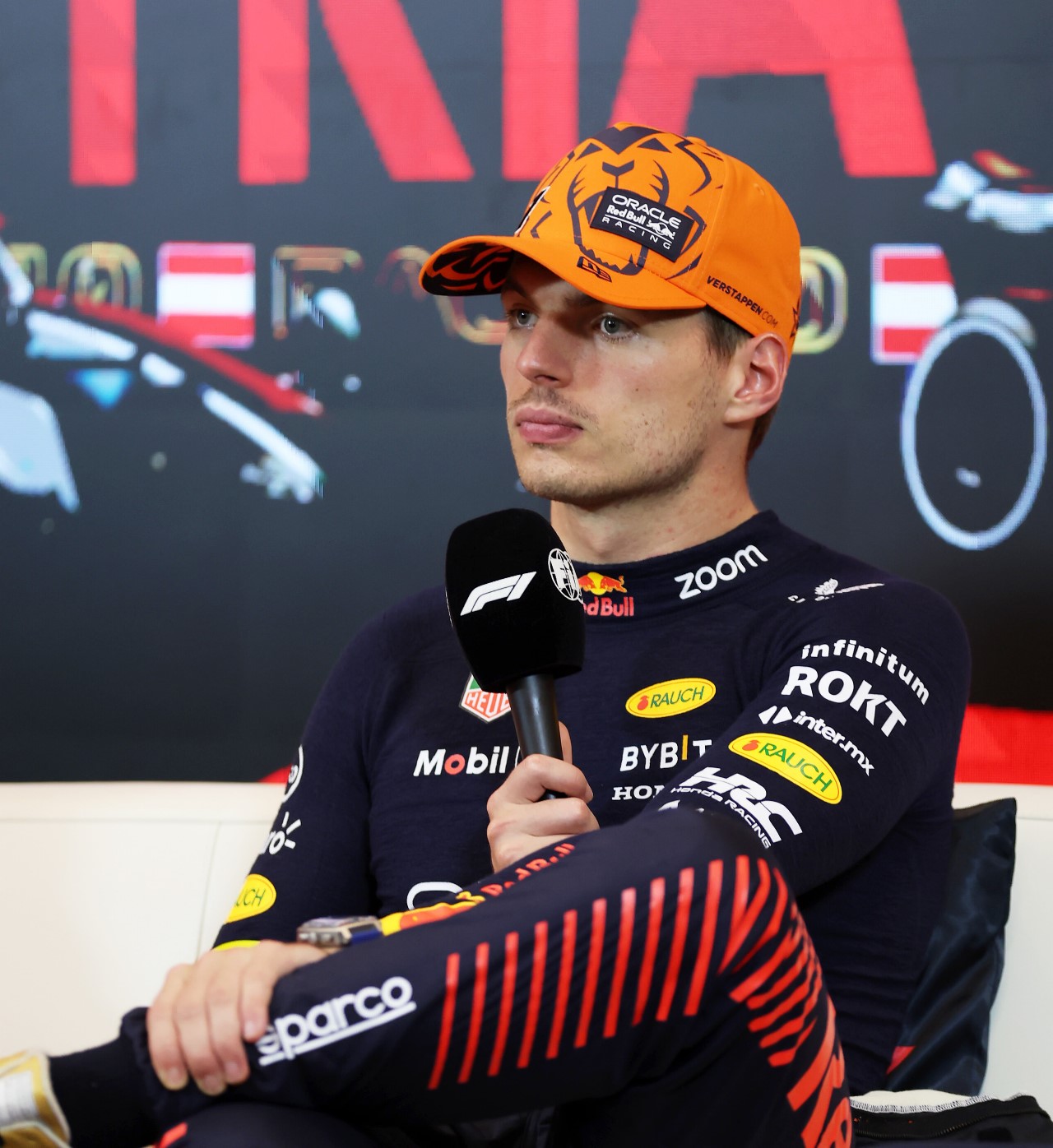
“That’s not the way forward,” Verstappen said.
“It looks like it’s going to be an ICE competition. So, whoever has the strongest engine will have a big benefit.
“But I don’t think that should be the intention of Formula 1, because then you will start a massive development war again, and it will become quite expensive to find a few horsepower here and there.
“It should be the opposite. Plus, the cars probably have a lot less drag so it will be even harder to overtake on the straight.
“Then you have the active aerodynamics, which you [the driver] can’t control, the system will control it for you. It makes it very awkward to drive because I prefer to control it myself.
“Of course, when you are behind someone maybe you need more front or more rear, this kind of thing. If the system starts to control that for you, I don’t think that’s the right way forward.
“Plus the weight is going way up again due to the heavier batteries. So, yeah, we have to seriously look at this, because ’26 is not that far away.
“It looks very bad, from all the numbers and what I see from the data already.
“It’s not something I am very excited about at the moment.”
June 30, 2023
–by Mark Cipolloni–
Red Bull team boss Christian Horner has chimed in on this topic during Friday’s Team Representative Press Conference at the Austrian GP.
Horner says that “urgent attention” is needed to make sure that Formula 1’s 2026 rule changes do not ruin the racing.
There is a real chance that on long circuits, or circuits with many long straights, the battery in the 2026 car will crap out and the driver will lose nearly 50% of their power and get smoked.
In addition, the tree-hugger battery will increase the weight of the car by at least 65 pounds. This is the exact opposite of what the drivers wanted. They have complained the cars are too heavy now as it is, but to appease the tree-huggers, the cars will get even heavier, more dangerous in accidents, and slower.
As we have stated many times, almost all tree-hugger (environmental) ideas do not work.
The increased reliance on tree-hugger batteries – with a 55/45 split between combustion engine and electric power production – could backfire and leave cars unable to run flat out around a lap because they cannot produce enough energy.
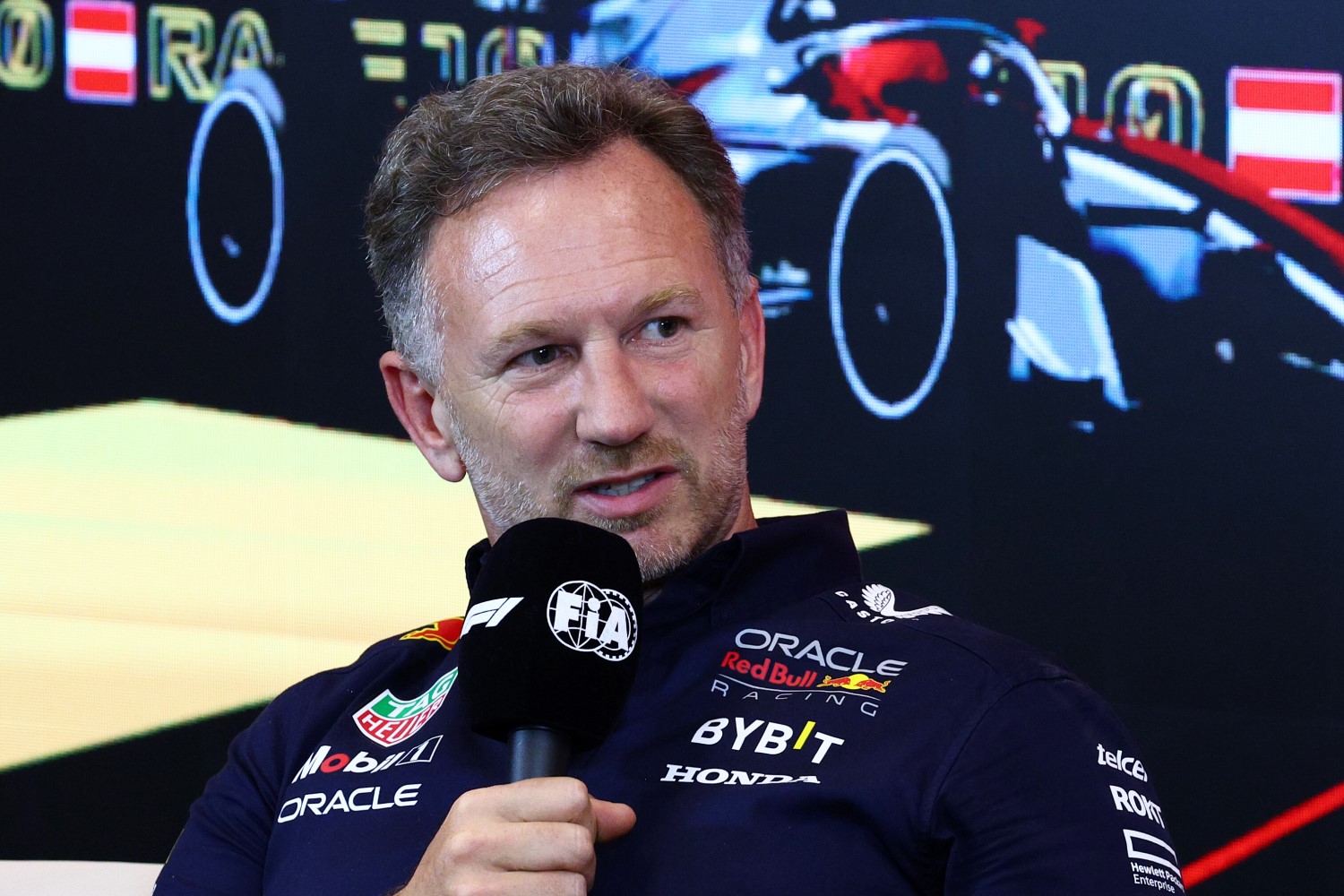
Horner has said that F1 needs to be careful with what happens – as he suggests it may be better to reduce the reliance on electrical power.
“I think that perhaps where we need to pay urgent attention, before it’s too late, is to look at the ratio between combustion power and electrical power,” he said at the Austrian Grand Prix.
“[We need] to ensure that we’re not creating a technical Frankenstein, which will require the chassis to compensate to such a degree with moveable aero and reduce the drag to such a level that the racing will be affected – and that there will be no tow effect and no DRS because effectively you’re running like that at all points in time.
“Plus, with the characteristics of these engines, that the combustion engine just doesn’t become a generator to recharge a battery.”
Horner does not believe the matter is complicated to solve, as he suggests a simple five per cent shift in combustion/electric power could be enough to help. However, he says the matter is a critically important one to get right.
“We still have two and a half years, and I think if there is a slight redress it would then create potentially a better platform for the chassis,” he said.
“Otherwise, the chassis regs that are undefined yet and uncommitted, we’re going to be trying to cater for those compromises.
“You have got to look at the thing holistically from both the technical point of view, and most importantly what is Formula 1.
“F1 needs to be wheel-to-wheel racing. We can’t afford to lose that challenge and have drivers downshifting on the straights to regenerate batteries.
“I know the FIA taking it very seriously, and they’re looking at it very closely as the simulations become more advanced.”
Horner said that another issue that needed to be considered for the 2026 rules was the extra weight of the batteries, which he has described as “colossal.”
“One of the big impacts for 2026 is weight,” he said.
“You’re looking at pretty much a 30-kilogram swing, on cars that are already approaching the sort of sportscar type of weight.”
Alfa Romeo Team representative, Alessandro Alunni Bravi, agreed.
“I agree that, of course, we can always improve because it’s important to keep the DNA of Formula 1,” he said.
“For Audi it has been important, this new regulation, and it has been the factor that pushed them to enter into F1, and I think it is important too, for everybody and all the stakeholders, that Audi will enter, and that we are attractive for new manufacturers.
“The focus on sustainability is crucial for the car manufacturers, and all the stakeholders are working to have a good show and to have a good car.
“Then the matter of ratio? It is difficult to say, but what Christian said, I agree that we need to have a holistic approach. It is not just a matter of PU, it is a matter of the overall package, the chassis and the engines.”
F1 should scrap the 2026 hybrid engines altogether, go with lightweight screaming V8s or V10s that use fuel that puts out zero, or near zero, pollutants.
The cars would be lighter, safer, faster and a delight to drive.
June 14, 2023
(GMM) There is a “big risk” Formula 1 will enter another period of one team dominating all the others once the big regulation changes for 2026 take effect.
World champion Max Verstappen is easily on course for a third consecutive drivers’ crown this year – but he thinks Red Bull’s dominance will ease over time.
“I think the longer you leave the regulations the same, the closer people will get,” he said. “So maybe this is something we need to look at.”
F1, however, is pushing ahead with the major 2026 rules changes, involving drastically ramping up the electric or ‘hybrid’ side of the power units.
It has convinced Honda to stay in Formula 1 while Volkswagen-owned Audi is setting up a 2026 works project – but Adrian Newey warns that it may backfire on the sport.
“The big risk now is the new change in power units in 2026,” Red Bull’s technical boss, and one of the most famous Formula 1 designers of all time, told Sky Italia.
Newey said Red Bull’s current dominance is mainly about aerodynamics – which is much easier for the straggling teams to simply copy.
“But if there’s a big difference in power units, it takes time for the manufacturers to understand and close the gap. The chassis people can react faster,” he said.
He recalls the start of the current ‘power unit’ period in 2014, which led to Mercedes’ long run of dominance that only ended in 2021.
“When the regulations for the hybrid era were first introduced, there were huge differences,” said Newey. “Mercedes had done a fantastic job with their power unit and other teams were behind to varying degrees.
“Now it’s basically levelled out,” he explained. “I would say there is maybe a 2 or 3 percent difference in power now, which could be two or three tenths – which is still significant when the field is so close together.
“But it’s not the same as that one second when the rules were introduced.”
June 13, 2023
–by Mark Cipolloni–
Like everything else in life, when you cow tail (sucking it up to please someone else’s fallacy) to the tree-huggers, it turns out bad.
New power unit regulations in Formula 1 from 2026 will see more reliance on the energy recovery system and the MGU-H is being dropped.
There will be six power unit manufacturers in the championship in 2026 as Mercedes, Renault, Ferrari are joined by Audi, Ford and the formal return of Honda.
In 2014, non-Mercedes powered teams were on the back foot as Mercedes had a significant power unit advantage when the current turbo-hybrid regulations were introduced.
They got everything so well the first time that they dominated the grid for quite a while.
Now that all the manufacturers are almost all on par with each other, F1 is going to appease the tree-huggers with a big engine change in 2026 that runs the risk of destroying all the years it has taken to get everyone on a level playing field.
Red Bull technical boss Adrian Newey hopes the difference between the best and worst engine is not so big in three years time.

“When the hybrid regulations first came in, there were huge differences. Mercedes did a fantastic job with their power unit and others were varying levels behind,” he said.
“Now it’s closed up so I would say there’s maybe two or three per cent in the power difference, which is 0.2 to 0.3s difference perhaps, which when the grid is so tight, is still a big number. But it’s not like the one second when the regulations came out.
“The big risk now is another power unit shake-up in 2026, there could be a gap for a while. If there’s a big gap in power units, it takes time for the manufacturers to understand and close it, whereas chassis people can have a quicker reaction time.”
